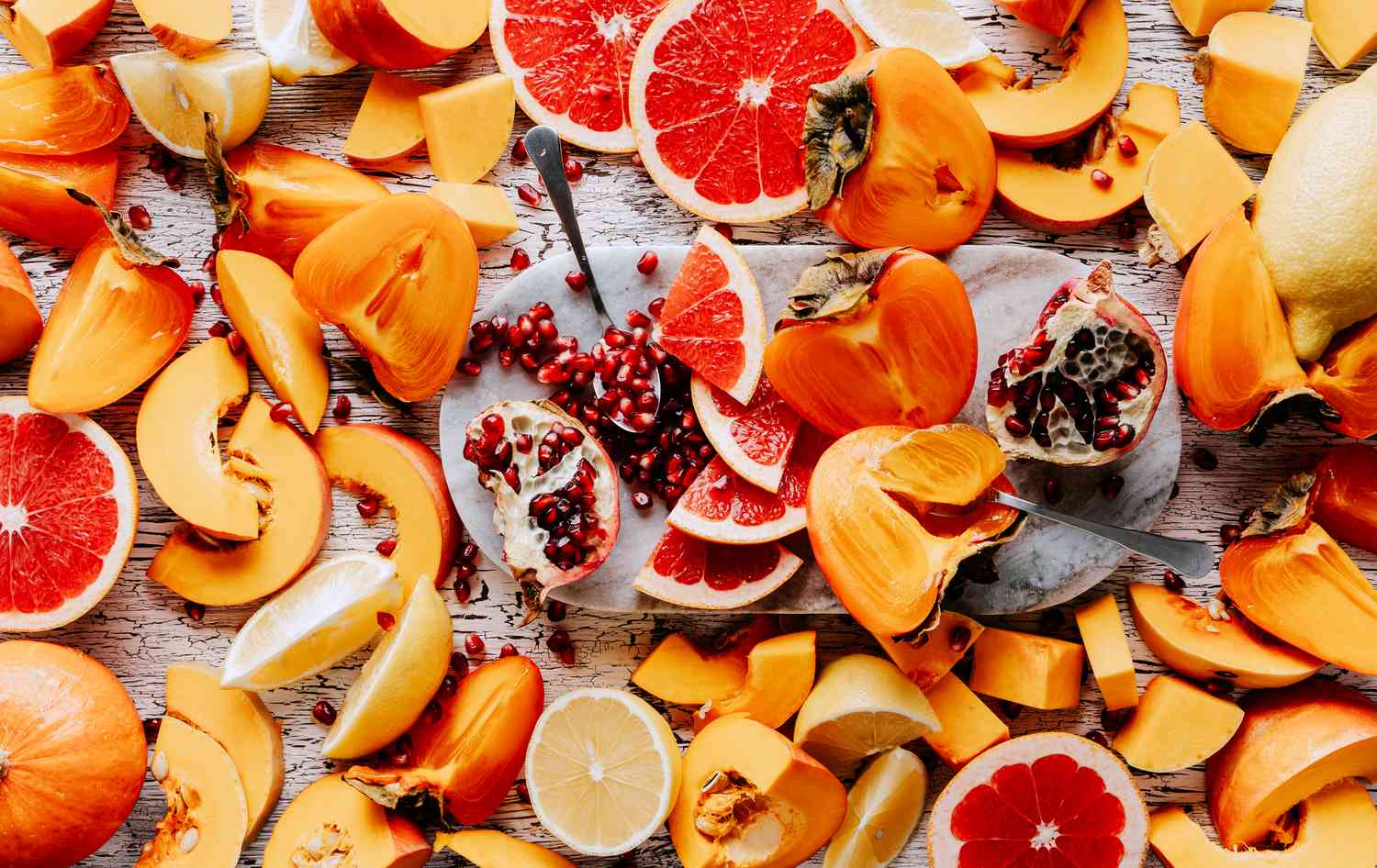Fresh Soft Fruits This Season

Thanks to relatively moderate temperatures and good rainfall levels, home gardeners across the country can experience a rewarding harvest of strawberries, raspberries, currants, and other delicate fruits that thrive in cooler yet temperate conditions. Many people find these fruits easier to grow compared to some tree fruits, and the process can be incredibly gratifying once the sweet tastes of homegrown produce begin to appear. However, success with soft fruits depends on choosing the right varieties, giving them proper care, and understanding the best ways to harvest and store them for enduring freshness. While established gardeners may already have their favourite cultivars in place, there are fresh soft fruit options emerging every season that can add diversity to a domestic garden or allotment. It is also helpful to remember that many nurseries and garden centres offer fruit trees for sale alongside soft fruit bushes, which can broaden the range of produce available in your plot.
A specialist at Chris Bowers explains that properly managing conditions for your fruit plants is key to a strong harvest. They recommend focusing on spacing, irrigation, and consistent feeding for healthy growth and an abundant crop. They add that timing your planting to coincide with the natural rhythms of your region’s climate will reduce the risk of complications from extreme weather. If you want to explore a wider range of products for your garden, this expert suggests taking a look at the soft fruit range to discover cultivars suited to your location and personal tastes.
The Value of Fresh Soft Fruits
Soft fruits, such as strawberries, raspberries, blackberries, and currants, bring a delicious sweetness to any British garden. They can be grown in a relatively small space, whether in raised beds, dedicated borders, or large pots and containers. Unlike some larger orchard trees, soft fruit bushes and canes can begin to bear fruit earlier in their lifespan, which offers a swifter reward to those just starting out with horticulture. Taste and freshness are essential factors. Homegrown soft fruits can be harvested at the ideal moment of ripeness, ensuring maximum flavour. This contrasts with many supermarket offerings, where fruit may be picked prematurely and shipped over long distances.
There is also the advantage of variety. Gardeners are not restricted to one or two commercial cultivars chosen for their durability; instead, they have the freedom to plant a selection of varieties based on flavour, colour, and growth habit. For example, strawberries come in early, mid, and late-season cultivars, allowing you to stagger their fruiting times for a continuous supply over several weeks. Similarly, raspberries can be divided into summer-fruiting and autumn-fruiting types, which further extends their usability in the kitchen.
Much like apple trees and other orchard favourites, soft fruits contribute to a garden’s aesthetic appeal. Raspberry canes lined up against a fence or a neat row of blackcurrant bushes can look just as charming as ornamental shrubs, especially when they flower in spring and then begin displaying colourful berries. Despite their attractive qualities, their primary function is undoubtedly the provision of fresh, tangy, and sweet produce that can transform home cooking, baking, and preserve-making.
Selecting the Right Varieties
Getting the most out of your soft fruit harvest starts with picking the right varieties for your soil type, climate, and intended use. Strawberries, for example, can be categorised into June-bearers, everbearers, and day-neutral types. June-bearing strawberries produce one main crop, which is often large and ideal for jam-making. Everbearers provide smaller harvests but over a more extended period, making them convenient if you want consistent access to fresh berries. Day-neutral cultivars are capable of producing fruit throughout much of the growing season, though typically in moderate quantities each time.
Raspberries, another staple of British gardens, are divided primarily into summer-fruiting and autumn-fruiting varieties. Summer-fruiting raspberries produce their crop on canes from the previous year’s growth, while autumn-fruiting raspberries bear fruit on the current year’s canes. This distinction matters when it comes to pruning and ensuring the health of the plants. Certain named varieties thrive especially well in cooler climates, which is beneficial in some northern parts of the UK. Anyone seeking out high-quality plants might find them alongside fruit trees for sale at reputable nurseries, though it is vital to look for healthy, certified disease-free specimens.
Another element to consider is flavour profiles and culinary uses. Blackcurrants, redcurrants, and whitecurrants may have similar growth patterns, but they differ in acidity and sweetness. Blackcurrants have a strong, tangy taste that makes them perfect for jams and sauces, whereas redcurrants are slightly tarter and often used in sweet and savoury dishes alike. Whitecurrants, with their translucent appearance and milder taste, are a favourite for those wanting a more delicately flavoured berry. The numerous gooseberry varieties available can vary from sweet to sour, shaping the ways in which you might choose to use them in the kitchen.
Cultivation and Care
Soil quality plays a major role in successful soft fruit cultivation. Most soft fruits appreciate a well-drained soil rich in organic matter. In clay soils, adding compost can improve aeration and drainage, while sandy soils may benefit from mulching to help retain moisture. Improving soil fertility and structure ensures that the plants have access to the necessary nutrients, which is especially critical during their fruiting stages. While you can incorporate organic matter during soil preparation, an annual mulch and gentle top dressing can also support sustained plant growth.
Light is another important factor. Strawberries, raspberries, and currants all need adequate sunlight to reach their full productive capacity. In areas with significant shade, yields might be reduced, and the fruit may not ripen uniformly. Nevertheless, in extremely sunny or hot spots, ensuring the plants receive enough water to support fruit formation is essential. Additionally, consistent watering helps to maintain even moisture levels in the soil, preventing issues such as fruit splitting or dryness.
Positioning is key. For raspberries, many gardeners opt for a dedicated row or patch where canes can be neatly tied to support wires or trellises. This arrangement keeps the canes stable, facilitates airflow, and makes harvesting simpler. Strawberries are often planted in rows or dedicated beds, though container growing is a viable option if space is limited. Currant and gooseberry bushes do well in borders or as standalone features, but they must be pruned to maintain airflow and encourage new, productive growth.
Feeding regimens differ slightly between species. While a general-purpose fertiliser will often suffice for many soft fruits, you can tailor your approach to each plant’s specific needs. For example, strawberries benefit from a balanced feed at the start of the growing season, followed by a high-potash feed around flowering time to boost fruit production. Raspberries require additional nitrogen during early growth to encourage strong cane formation. Regularly removing weeds around these plants is vital to reduce competition and ensure the roots have unobstructed access to nutrients.
Pruning can be a make-or-break factor in promoting optimal fruit yields. Summer-fruiting raspberries bear fruit on old canes, so once the harvest is over, the spent canes should be removed at ground level. The new green canes should remain and be tied in, ready to produce fruit the following year. Autumn-fruiting raspberries can be cut down entirely in late winter to allow new canes to form and yield fruit when autumn arrives. For currants, pruning involves removing older wood to promote vigorous new growth that will carry next season’s harvest. Proper pruning prevents overcrowding, diseases, and encourages healthy fruit-bearing structures.
Harvesting and Storage
Timing the harvest is one of the most fulfilling steps in growing your own soft fruits. An observant gardener knows that strawberries should be picked when fully red and slightly firm, rather than waiting until they become overly soft, which can lead to a mushy texture. Raspberries come away from the central plug easily when ripe, revealing their delicate yet flavourful nature. Currants signal maturity by developing their characteristic colour on the entire cluster. Typically, a full blush on each individual berry indicates they are ready for picking. Overripe berries can quickly attract pests or drop to the ground, so daily checks during peak season help prevent waste.
As soon as they are harvested, soft fruits begin to lose their freshness. For those who cannot consume all their produce straight away, refrigeration is essential. For strawberries, a single layer in a shallow container helps to prevent bruising. Raspberries, being more fragile, may need even more careful handling to avoid crushing the delicate structure of the druplets. Currants and gooseberries are slightly firmer and can typically be stored for a little longer without compromising quality. If you are faced with an abundance of fruit, freezing is a sensible alternative. Freezing fresh berries on a tray before transferring them into containers allows them to retain their shape and prevents clumping.
Preserving surplus harvests is a time-honoured tradition among British gardeners. Turning your raspberries or blackcurrants into jam can extend their shelf life and provide a bright, fruity flavour during colder months. Jellies and cordials are also popular for showcasing the unique tastes of the fruit. If you have grown gooseberries, their tangy nature suits chutneys and sauces, which can be an unexpected way to incorporate fresh, homegrown flavours into meals throughout the year.
Enhancing the Garden Experience
While fruit trees for sale remain a popular choice for home orchards, the quick rewards of soft fruits can be equally appealing. Many gardeners enjoy the seasonal ritual of picking fresh strawberries with family members or observing the transition of green raspberries to deep red jewels as part of their gardening journey. Incorporating soft fruit plants into a landscape can be as practical or as decorative as you wish, thanks to the wide variety of shapes, sizes, and growth habits.
In some cases, soft fruit plants can also be grown in smaller or confined spaces, making them accessible to those with limited gardens or balconies. Alpine strawberries, for example, produce tiny but intensely flavoured fruits and can be grown in pots or even window boxes. Some dwarf or compact raspberry varieties, designed specifically for container culture, allow you to enjoy fresh berries without the need for extensive ground space. This flexible approach to soft fruit gardening can transform even the smallest urban setting into a productive oasis.
Common Challenges and How to Address Them
Despite the many advantages of growing soft fruits in the UK, gardeners can encounter a range of challenges. Birds, for instance, have a particular fondness for ripe berries. Netting the plants or using fruit cages can be an effective way to prevent birds from feasting on an entire crop. However, it is important to secure the netting properly to ensure that birds do not become trapped inside. Slugs and snails can also threaten strawberries, especially in damp conditions. Creating barriers around plants, such as using copper tape around pots, can reduce slug and snail damage.
Fungal diseases can make an appearance in prolonged wet seasons. Grey mould (Botrytis cinerea) is a common culprit that affects strawberries, raspberries, and other soft fruits, causing fruit rot and spoilage. Good airflow between plants and the removal of any diseased or rotting material usually helps lessen its impact. Powdery mildew, recognisable by a white or greyish powder on leaves and fruit, can also strike in damp and humid conditions. Taking preventive measures such as watering early in the day to allow foliage to dry can help. Choosing disease-resistant or tolerant varieties is another method to mitigate these problems.
In some areas, vine weevils can be a notable issue, particularly for strawberries grown in containers. Their larvae feed on roots, potentially causing severe damage to the plants. Biological controls, such as nematodes, offer a chemical-free method to deal with this pest. Alternatively, a careful inspection of containers and refreshing the compost regularly may help to keep vine weevil populations at bay.
Innovative Uses of Fresh Soft Fruits
Beyond traditional recipes like jams, pies, and shortcakes, soft fruits can be surprisingly versatile in the kitchen. Raspberries and currants lend themselves to sauces for meats, adding a sweet yet tangy dimension to savoury dishes. Strawberries pair well with balsamic vinegar, creating an elegant dessert with minimal preparation. Home gardeners sometimes experiment with dehydrating or oven-drying fruits to create chewy snacks. Blending a mixture of different soft fruits into smoothies can be a refreshing way to start the day, particularly in the height of summer when the garden might be producing more than you can eat fresh.
Homemade wine and liqueurs are another popular avenue for the abundant home harvest. Raspberries, redcurrants, and blackcurrants can yield flavourful wines that capture the essence of the garden in each sip. Furthermore, infusing spirits like gin or vodka with homegrown berries has gained popularity, resulting in bright, fruity notes that make for distinctive cocktails or after-dinner drinks. Such creative endeavours show the broad range of possibilities that soft fruits can bring to a British kitchen, well beyond the simpler pleasures of fresh, raw eating.
Extending the Season
While the main harvest period for most soft fruits is summer and early autumn, it is possible to stretch the season. Using cloches or plastic tunnels can help you start the growing season earlier in spring or extend it later into autumn, particularly with strawberries. Some gardeners experiment with different cultivars of raspberries to have a supply of fruit throughout summer and well into autumn. Everbearer strawberries, in particular, can produce fruit from early summer until the first frosts if given proper care and feeding.
Greenhouses can further expand the realm of possibility. Although more commonly associated with tomatoes, cucumbers, and exotic plants, certain soft fruit varieties can be raised in controlled conditions to maximise yields and protect the fruit from external weather fluctuations and pests. Greenhouse-grown strawberries or raspberries can sometimes be coaxed into early production, providing a homegrown harvest ahead of the usual outdoor schedule. While this approach requires a bit more maintenance and cost, the reward is often an extended harvest window that can supply fresh berries for a good portion of the year.
Companion Planting and Garden Harmony
Soft fruits can be integrated into a wider garden ecosystem where companion planting and natural pest control methods work together. Herbs such as thyme, chives, and mint can help repel certain insects, and they also provide aromatic benefits that do not interfere with soft fruit production. Encouraging beneficial insects, like ladybirds and lacewings, can help combat aphids that may target tender young growth on canes and bushes. Creating small habitats or planting insect-friendly flowers near soft fruit plants can turn a simple patch into a thriving mini-ecosystem.
Mulching around plants with organic materials not only helps conserve moisture but also adds nutrients to the soil as it breaks down. Some gardeners use straw around strawberries to keep the developing fruits clean and dry, but other organic mulches, like compost or well-rotted manure, can be used around currants and gooseberries to suppress weeds and enrich the soil. Over time, practising these methods leads to healthier plants that can naturally resist some pests and diseases, reducing the need for chemical interventions.
Considering Future Growth
For gardeners who start with small patches of strawberries or a few raspberry canes, it is not unusual for the operation to grow over time. Success with one type of soft fruit often motivates exploration into others. A well-balanced garden might include an assortment of different berries, each ripening at various stages of the season. This approach ensures a steady supply of fresh produce and a continuous opportunity to experiment in the kitchen. It also helps spread the workload, as you are not managing all your harvesting and preserving tasks in one intense period.
Moreover, soft fruit gardening can serve as a gateway to trying more complex horticultural projects. Once you become accustomed to the schedules, feeding requirements, and pruning techniques of soft fruit plants, you might find yourself drawn to fruit trees. It is common to see fruit trees for sale in nurseries featuring a variety of orchard species—apples, pears, plums, and more—that can harmonise with your soft fruit patch to create a more extensive and diverse edible landscape. These orchard species, though they demand a bit more space and patience, can be a natural next step for the dedicated gardener.
Maintaining Sustainability and Reducing Waste
Growing soft fruits at home aligns well with sustainable living principles. By cultivating berries yourself, you cut down on food miles and reduce the reliance on plastic packaging. You also gain the advantage of controlling exactly what fertilisers or treatments go into producing your fruit, allowing for a more organic approach if desired. This eco-friendly aspect appeals to many who appreciate the concept of a smaller carbon footprint and a more transparent food supply chain.
Handling crop surpluses in a way that minimises waste is also part of sustainable home gardening. Freezing or preserving abundant harvests extends their use, preventing any portion of the crop from going to waste. Excess produce might even be shared with neighbours, friends, or community groups, encouraging local food sharing and fostering a sense of community resilience. By embracing these sustainability practices, gardeners contribute positively to the environment and cultivate habits that can benefit both present and future generations.
Planning for the Long Term
While the first season of growing soft fruits might be largely experimental, future years offer opportunities to refine techniques and better understand a garden’s microclimate. Observing how plants respond to local weather patterns can guide decisions on variety selection, positioning, and the timing of planting or pruning. As plants mature, yields can increase, and flavours can intensify, reinforcing the satisfaction of producing fruit from your own patch of land.
Investing in netting, supports, and other protective measures can pay off in future harvests, as well-established raspberry canes or currant bushes reward consistent care. Additionally, soil health can improve over time with repeated amendments and natural mulching, making it easier to sustain healthy, thriving plants. In the event that certain varieties prove less successful, it is always possible to replace or rotate them with new cultivars, searching for the perfect fit for your conditions and personal tastes.
Enriching the Culinary Experience
One of the driving motivations for growing soft fruits is the culinary potential. Raspberries straight from the cane or strawberries plucked moments before eating capture a freshness and sweetness rarely found in shop-bought produce. While immediate consumption is undoubtedly a highlight, turning these fruits into preserves, desserts, or savoury accompaniments can greatly enhance a gardener’s repertoire. Soft fruit desserts, traditional crumbles, and fresh fruit salads form part of the quintessential British summer experience. Even something as simple as a handful of fresh berries can brighten a breakfast bowl or afternoon snack.
Creating homemade ice creams or sorbets is another way to make use of your fruit harvest, particularly appealing during the warmer months. Blending freshly picked berries with cream, sugar, or alternative sweeteners can produce a delectable treat that can be stored for later enjoyment. Many gardeners relish the sense of pride that comes from serving guests a dessert made almost entirely from homegrown ingredients. By combining your fresh soft fruits with herbs, spices, or other orchard fruits, you can develop original recipes that bear a unique signature, rooted in your personal harvest.
The Role of Community and Sharing Knowledge
Across the UK, local horticultural societies and allotment groups often arrange workshops, fairs, or open days where members share tips on growing soft fruits, orchard trees, and more. These events can be a valuable resource, offering insights gained from firsthand experience in local growing conditions. Many communities provide spaces where people can swap surplus plants or cuttings, encourage novices, and even exchange harvests to diversify their home produce.
For those who have gleaned a wealth of experience over multiple growing seasons, passing on knowledge to newcomers can be particularly rewarding. It fosters a spirit of communal learning and mutual support that helps ensure each gardener’s success. Whether you only have space for a few containers on a balcony or have a sprawling plot capable of hosting multiple rows of berries, there is always an opportunity to connect with others, share best practices, and potentially learn new techniques.
Conclusion
Soft fruits hold a special place in British gardening. Their relatively quick turnaround from planting to harvest, the unrivalled freshness they provide, and their adaptability to a range of garden sizes and conditions make them a staple for many. From strawberries perched in hanging baskets to rows of raspberries supported by wires, each method of cultivation offers both a practical and aesthetic dimension to home gardening. Beyond their sweetness, these berries represent the potential of a garden to be both beautiful and productive.
Choosing the right varieties and adopting proper techniques for planting, feeding, pruning, and protecting soft fruits allow gardeners to maximise yields and minimise issues like pests and diseases. From the first flush of strawberry blooms in late spring to the final raspberries of autumn, growing these fruits can be a continuous and educational journey, one that encourages experimentation in both the garden and the kitchen.
Though fruit trees for sale tempt many with the idea of a full orchard, the appeal of soft fruits lies in their accessibility and immediate gratification. Their presence can complement an orchard, or stand alone as a rich, fruitful addition to any outdoor space. Whether harvested by the handful and eaten on the spot or stored, preserved, and turned into jams and desserts, soft fruits remain a quintessential part of the British summer’s bounty.
In a world where so much produce is mass-produced and shipped from far-away places, cultivating soft fruits in your own garden reintroduces the personal relationship between grower and food. It allows you to witness the transformation of tiny blossoms into plump berries, developing not just a deeper appreciation for fresh produce but also a sense of stewardship and respect for the land. The flavours, scents, and colours of homegrown soft fruits bring joy to meals and enrich the gardening experience, ensuring that these seasonal favourites will always have a cherished spot in Britain’s gardens.






